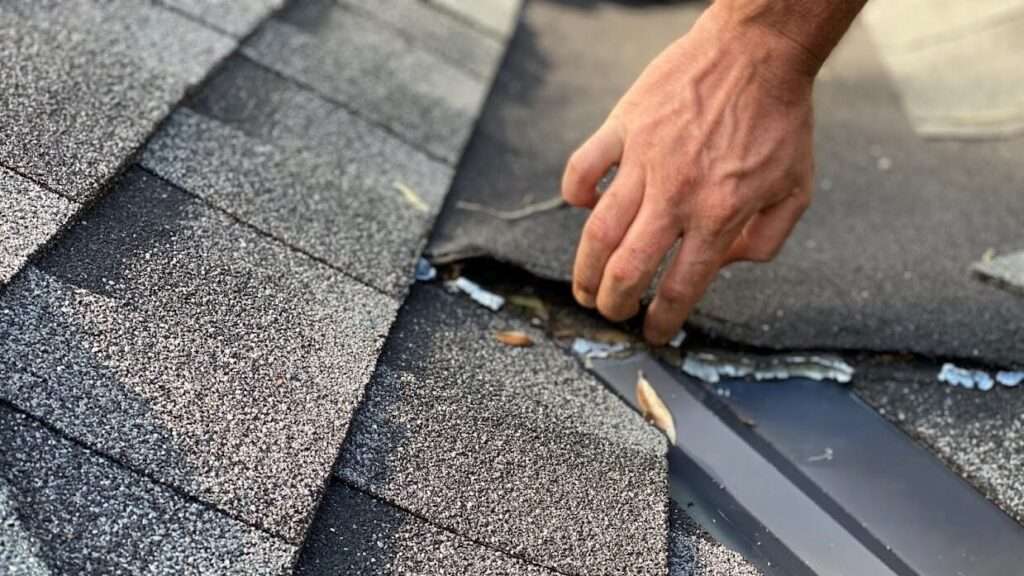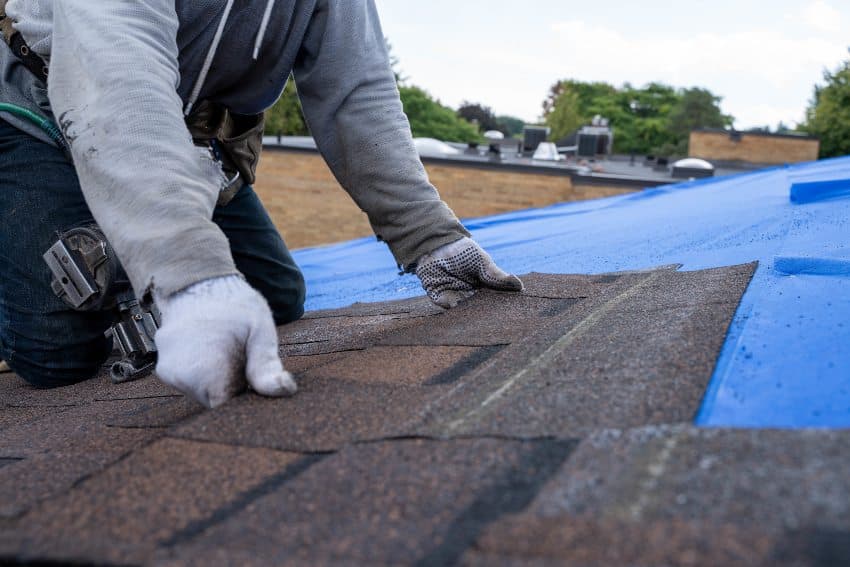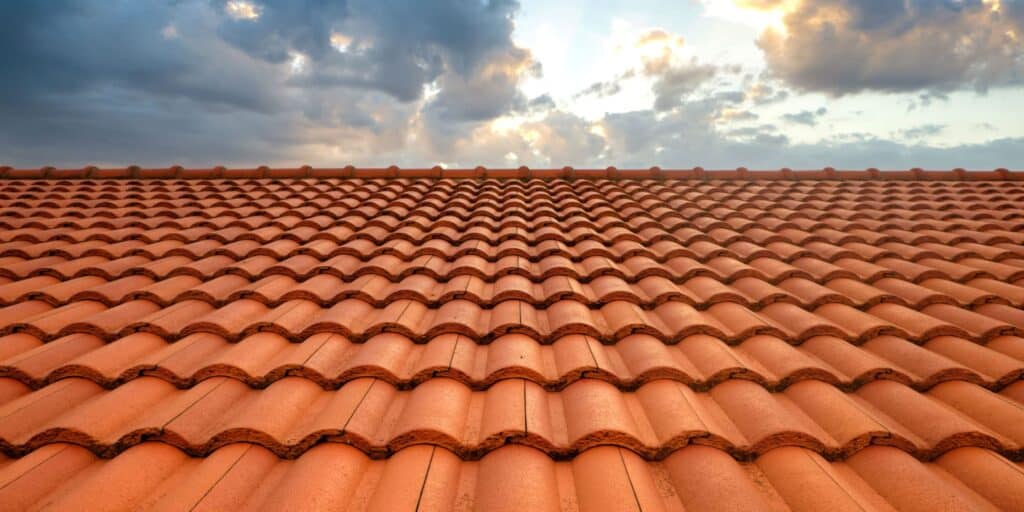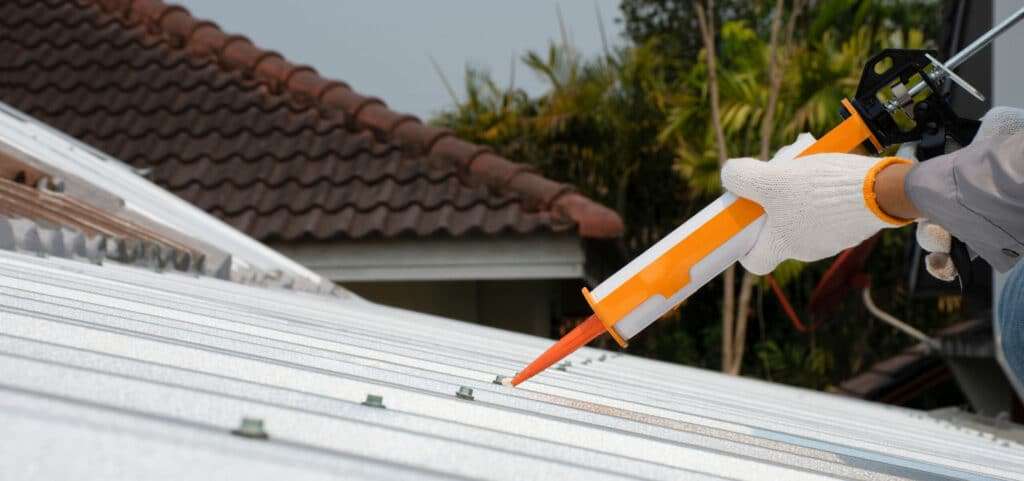Roofing Solutions That Can Handle Toronto’s Extreme Weather Toronto’s weather...
Read More

Roofs are more than just a hat on top. They protect us from the weather, add to the look of our home and can even save us money on our energy bills.
In this article we’ll be looking into the world of roofing materials. We’ll cover the most popular options to the latest innovations that are shaking up the industry.
We’ll also share some fun facts about roofing you didn’t know. For example did you know the colour of your roof can affect your home’s energy efficiency?
Whether you’re a homeowner, DIYer or construction professional this guide will cover roof repair and replacement processes.
The Evolution of Roofing Materials
Roofing materials have come a long way since the early days. Humans used whatever was available to them, leaves and grass to animal skins. As civilisation advanced so did roofing technology.
Today we have a plethora of options to choose from. From traditional wood and slate to modern innovations like solar shingles and green roofs. Each has its own pros and cons so the choice of roofing is a big decision for any homeowner or builder.
A roof’s lifespan can be very different. It depends on the material and installation and maintenance. Some materials like slate can last over 100 years. Others like asphalt shingles have a shorter life.
Asphalt shingles for example last 20-30 years. Metal roofs 50 years or more. Tile and slate roofs even longer, over 100 years.
Here’s a quick rundown of common roofing materials and their typical lifespans:
Asphalt shingles are the most popular roofing material in the US. They’re cheap and easy to install. But they have a shorter life than others.
But regular maintenance can extend their life. So they’re a good choice for many homeowners.
Metal roofing is durable. It can withstand extreme weather and has a long life. So it’s a good choice for homes in extreme weather areas.
While metal roofing is more expensive upfront, its life can be cost effective in the long run.

Slate and tile roofs have been around for centuries. They’re unique and long lasting. These can last over 100 years, so it’s a long term investment.
However, they’re heavier than other materials. This means they require a strong structural support, which can add to the cost of installation.

Roofing innovation is happening. New products are being created to meet the growing demand for sustainable and energy efficient options. These innovations are to perform better, reduce waste and offer something unique.
Solar shingles are a game changer in the roofing industry. They are solar panels and shingles in one. A great option for homeowners looking to save on energy costs.
While the upfront cost is higher, the long term savings on your energy bill will be worth it.
Green roofs are another option. They are covered in vegetation which provides natural insulation and helps reduce urban heat islands. This can save a lot of energy especially in urban areas.
Plus they look great. They can turn a plain roof into a green oasis, bring some nature to the urban jungle.
Roof repair and replacement is big business. The cost can be all over the place depending on the material and work involved. You need to know what you’re getting into before you start.
Regular maintenance will extend the life of your roof and prevent repairs. But even with the best maintenance all roofs will need to be replaced.
Knowing when to repair and when to replace your roof will save you time and money in the long run.
Regular maintenance is key to getting the most out of your roof. This means regular inspections to catch problems before they become major repairs.
Ignoring small problems can turn into bigger problems down the line. Regular maintenance will help you avoid those costly repairs and extend the life of your roof.
Knowing when to replace your roof is just as important as regular maintenance. Signs you may need a roof replacement are leaks, missing or damaged shingles and your roof is past its life expectancy.
If you’re experiencing these issues it may be more cost effective to replace your roof rather than continue to repair. Always consult with a professional to make the right decision for your home.
Choosing the right roofing material for your home is a big decision. It’s not just about looks or cost. There’s more to it.
Climate plays a big part in determining the best roofing material for a home. Some materials can withstand high winds and hail so are perfect for stormy areas.
The weight of the material is another consideration. Your home’s structure can only take so much. Always consult with a professional to make sure it’s right for your home.
Your local climate will play a big part in your choice of roofing material. For example metal roofing is durable and can withstand high winds so is perfect for stormy areas.
On the other hand in hot climates roofing materials that reflect the sun and resist heat absorption will keep your home cool. Always consider your local climate when choosing a roofing material.
The choice of roofing material will also affect your home’s energy efficiency. For example the colour of your roof will affect your home’s energy efficiency by absorbing or reflecting the sun.
Energy efficient roofing materials will save you on heating and cooling costs. Reflective roofing materials will reduce the urban heat island effect and keep your home cool in summer.
Choosing the right roofing material is a big decision that will affect your home’s durability, energy efficiency and looks. By understanding the properties of different roofing materials and considering climate and structural requirements you can make an informed decision that suits you and your needs.

Roofing Solutions That Can Handle Toronto’s Extreme Weather Toronto’s weather...
Read MoreGet A Free Roofing Quote Roof repairs are a part...
Read MoreGet A Free Roofing Quote Living in North York has...
Read MoreTrustindex verifies that the original source of the review is Google. I recently had my flat roof replaced by Professional Roofers Toronto, and I'm thrilled with the result! The process was easy, and the team was extremely friendly and professional. Now, my flat roof looks great and gives my home a fresh, modern vibe (photo attached for reference). I couldn't be happier! Thank you SO much! Highly recommended to anyone with roofing needs.Trustindex verifies that the original source of the review is Google. I recently had my roof replaced by Professional Roofers Toronto, and I'm extremely satisfied with the outcome. The new roof not only provides better protection but also enhances the curb appeal of my home. Attached is a photo showcasing the impeccable workmanship. I highly recommend Professional Roofers Toronto!Trustindex verifies that the original source of the review is Google. Exceptional service from start to finish. The team exceeded all expectations. Their professionalism, attention to detail, and expertise were evident from the initial consultation to the final inspection. Our new roof not only looks fantastic but also withstands the elements flawlessly. Highly recommend for anyone in need of reliable and skilled roofing services!Trustindex verifies that the original source of the review is Google. I recently hired Toronto Professional Roofers for a roof replacement, along with soffit and fascia installation, and I couldn't be happier with the results! They provided a thorough assessment of my roof's condition, offered transparent pricing, and completed the project in a timely manner. The quality of their workmanship surpassed my expectations, and my home now looks fantastic thanks to them. I highly recommend Toronto Professional Roofers to anyone in need of roofing services in the GTA.Trustindex verifies that the original source of the review is Google. Wow, these guys were professional from start to finish! Jaime and Mike were super helpful with fixing our damaged roof. Highly recommend!Trustindex verifies that the original source of the review is Google. Got a leak in my roof from a rainstorm. Really fast response and overall service was impressed me. Quickly identified and fixed the issue (despite the rain). Gladly recommend them as they delivered for us.Trustindex verifies that the original source of the review is Google. I recently hired them to work on the flat roof of my new home and just like before, they exceeded my expectations. The job was completed promptly and the pricing was fair.Trustindex verifies that the original source of the review is Google. I highly recommend this roofing company! Their team provided a fast and efficient service, promptly addressing my roofing issues. From their quick response to the use of top-notch materials, their reliability and commitment to quality were evident throughout the entire process. I'm extremely satisfied with the results and would confidently choose them again for any roofing needs.Trustindex verifies that the original source of the review is Google. I hired them to do a flat roof on my newly built home and they not only delivered it on time, but it was well priced and issue freeTrustindex verifies that the original source of the review is Google. The team at Professional Roofers Toronto did a fantastic job on my roof last summer. They were attentive, ensuring the job was done right and that I was happy with the results. The transformation speaks for itself—my roof looks incredible now!
Your Go-To Roofing Company in Toronto, Offering Exceptional Roofing Services, Expert Roof Repairs, and Top Local Roofing Contractors Near You.